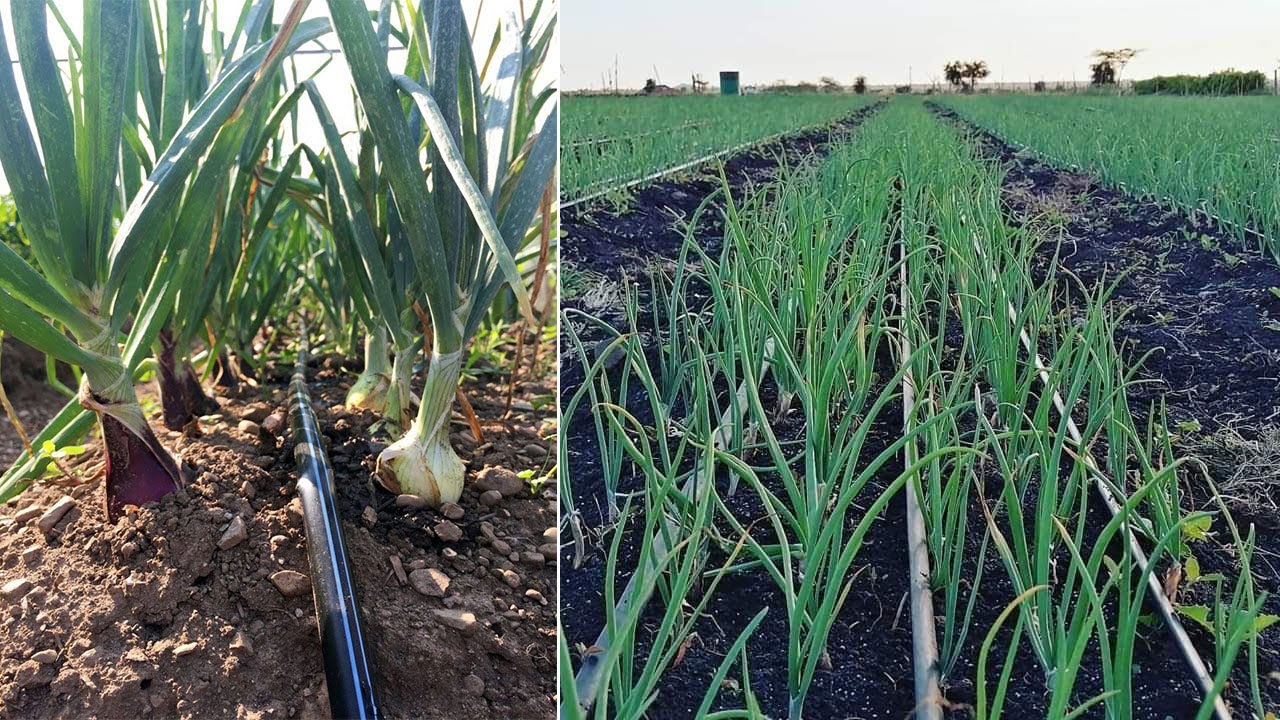
Onion Farming: Irrigation and Fertilization Techniques for Optimal Growth
Onion farming is a rewarding endeavor, but it requires knowledge and expertise in various aspects of cultivation, including irrigation and fertilization. This comprehensive guide will provide the essential information and techniques for optimizing these critical aspects of onion farming to ensure healthy crop growth and high yields.
Understanding Onion Growth Requirements
Onions are a sensitive crop, and their success depends on several factors, including the right amount of water, fertilizer, and proper soil conditions. To cultivate high-quality onions, it is crucial to understand their growth requirements and how to cater to them.
Water Requirements
Onions have a shallow root system, requiring frequent irrigation to achieve high yields and uniform bulbs. It is essential to avoid excessive moisture at the growing stage, as it can lead to poor quality onions or even death of the crop.
Proper moisture management promotes general root health and ensures vigorous bulb growth.
Fertilizer Requirements
Onions require specific nutrients to grow and develop properly. Soil analysis should be conducted before planting to determine the nutrient requirements of the soil.
Top-dressing, the application of fertilizers to the soil surface, is crucial in providing the onions with necessary nutrients. It is essential to note that too much nitrogen can result in thick necks, so the application should be carefully managed.
Irrigation Techniques for Onion Farming
Precision irrigation is the key to achieving high-quality, uniform onion bulbs while saving water. Drip irrigation is the preferred method for onion growers, as it provides consistent soil moisture and minimizes water waste.
Drip Irrigation Basics
Drip irrigation uses a network of pipes and emitters to deliver water directly to the plant roots. This method has several advantages over traditional irrigation methods, including:
-
Consistent soil moisture restricts excessive root growth and reduces the risk of bulbs splitting.
-
Reduced leaf moisture lowers the chances of foliar diseases such as Downey Mildew.
-
Improved water efficiency, as water is directed only to the plant roots, reducing evaporation and runoff.
Drip Irrigation Considerations
When implementing drip irrigation in onion farming, consider the following factors:
-
Lighter soils need more frequent water applications but less water applied per application.
-
Increase the water application as plants and roots increase in size.
-
Drought stress can cause splitting or formation of double/multiple bulbs, so monitoring and adjusting water application is crucial.
Fertilization Techniques for Onion Farming
Precision fertigation, the application of fertilizers through an irrigation system, is an effective method of providing onions with the nutrients they need for optimal growth. This approach has several advantages over traditional fertilization methods, such as:
-
Consistent nutrition always reaches the roots, eliminating waste.
-
Efficient fertilizer application, as soluble fertilizers are applied close to the active root hairs, boosting uptake by the plant.
Monitoring Soil Moisture and Fertility
Maintaining optimal soil moisture and fertility is essential for onion farming. Some tips for monitoring these factors include:
-
Use moisture sensors or tensiometers to monitor soil moisture levels and adjust irrigation accordingly.
-
Conduct regular soil tests to determine nutrient levels and adjust fertilization practices.
-
Utilize fertigation systems with high uniformity (above 90%) to ensure even nutrient distribution.
Unearthing Onions: Why and How?
Unearthing is the process of removing excess soil around the onion bulb to facilitate proper growth and development. The primary objectives of unearthing are:
-
Loosening the soil to allow the bulb to expand or develop well
-
Facilitating the coloring and curing process
Unearthing should be carried out during the second and subsequent weeding, and it involves removing the soil from the bulbs by hand while being careful not to damage or expose the roots.
Harvesting and Storage
Harvesting onions at the right time and using proper storage techniques are essential for maintaining their quality and shelf life. Some tips for harvesting and storing onions include:
-
Harvest onions when the tops have fallen over and the bulbs have reached their desired size.
-
Allow onions to cure in the field for a few days before storing.
-
Store onions in a cool, dry, and well-ventilated area, away from direct sunlight.
Continuous Improvement and Learning
Successful onion farming requires ongoing learning and improvement. Attend workshops, conferences, and online training sessions by staying current on the latest research, techniques, and technologies. Networking with other onion growers and industry experts can help you stay informed and improve your farming practices.
Boost Your Onion Farm’s Yield with Drip Irrigation from Mazero
Are you still using manual irrigation techniques for your onion farm? Upgrade to the latest drip irrigation systems from Mazero Ltd and see the difference in yield and quality. Our drip irrigation systems are designed to provide precise watering to each plant while conserving water and reducing labor costs.
Say goodbye to wasteful irrigation methods and switch to the drip irrigation system that has transformed onion farming. Contact us today to learn more about how we can take your crop production to the next level.

